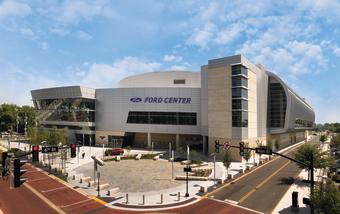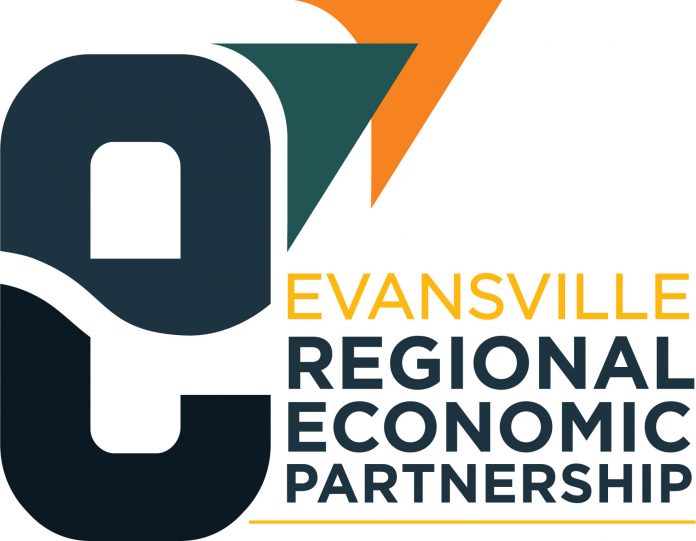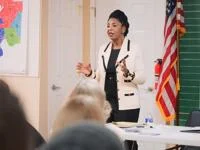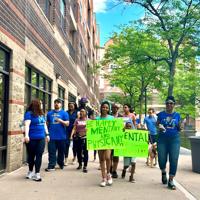Revitalizing a Struggling Downtown: A Long-Term Case Study
FEATURE: Revitalizing a Struggling Downtown: A Long-Term Case Study
BY JOE J WALLACE
July 24, 2024
In the heart of many American cities lies a downtown area that was once bustling with commerce, culture, and community. Over the past six decades, however, numerous downtowns have faced significant challenges: retail stores shuttered, buildings stood vacant, and populations dwindled. Such was the case for the downtown in question. Fifteen years ago, the local government embarked on an ambitious plan to revitalize this struggling area. However, despite initial enthusiasm and some early successes, long-term outcomes have been disappointing, revealing the complexity of urban renewal.
The Initial Revitalization Initiative
In response to decades of decline, the local government launched a comprehensive revitalization plan. The centerpiece of this plan was the construction of a $128 million Sports and Entertainment arena. The Ford Center arena was touted as the key feature that would fill empty businesses, attract visitors, and pay for itself through generated revenue. Alongside the arena, the initiative included significant investment in infrastructure, business incentives, and public safety efforts.
Key Components Of The initial Downtown Improvement plan included:
- Ford Center Arena: A state-of-the-art facility intended to host sporting events, concerts, and other entertainment to draw large crowds downtown.
- Infrastructure Improvements: Upgrading roads, sidewalks, and public transportation to make the downtown more accessible and appealing.
- Business Incentives: Offering tax breaks, grants, and low-interest loans to attract new businesses and support existing ones.
- Public Safety Enhancements: Increasing police presence and implementing community policing strategies to reduce crime.
- Cultural and Community Events: Organizing festivals, markets, and other events to draw people into the downtown area.
- Residential Development: Encouraging the construction of affordable housing to bring residents back into the city center.
The Short-Term Successes
In the early years, the revitalization initiative yielded promising results. The new arena brought in entertainment and sporting events that drew large crowds. New businesses opened, creating jobs and generating tax revenue. Cultural events and festivals brought people together, fostering a sense of community. The construction of affordable housing attracted some new residents, and public safety improvements led to a reduction in certain types of crime.
The Long-Term Realities
Despite these initial successes, the long-term outcomes have been far less encouraging. The downtown area continued to face significant challenges, revealing the limitations of the revitalization plan and the need for a more nuanced approach.
- Population Decline: Although new residential housing was developed, the downtown population continued to decrease. Many people were still hesitant to move back due to ongoing concerns about crime and the overall economic stability of the area. The new housing stock often remained underutilized, reflecting deeper demographic and economic trends that the revitalization plan failed to address.
- Lack of Essential Services: One of the most critical issues was that the downtown area never had a sufficient population to support fundamental needs like a grocery store, gas station, or pharmacy. Without these essential services, the area struggled to attract and retain residents, further exacerbating the population decline.
- Economic Volatility: While the initial wave of businesses brought some economic activity, many of these establishments, particularly restaurants, struggled to survive. A revolving door of failed businesses created an unstable economic environment, deterring further investment. The business incentives proved insufficient to ensure long-term sustainability, as underlying economic conditions remained unfavorable.
- Ford Center Arena Financial Issues: The Ford Center arena, intended as the linchpin of the revitalization effort, failed to deliver on its promises. Although it brought some good entertainment, it also incurred significant operating losses from day one, diverting funds from essential public services like fire and police. Moreover, the revenue generated by the arena was insufficient to cover the loan repayments, creating a financial burden on the city.
- Crime Rates: Public safety improvements had a limited long-term impact. Although petty theft decreased initially, more serious crimes persisted. The root causes of crime—poverty, unemployment, and social dislocation—remained largely unaddressed, limiting the overall effectiveness of these measures.
- Neglected Suburbs: As the local government focused resources and attention on the downtown area, the growing suburbs were largely ignored. This neglect led to a widening gap between the struggling urban core and the thriving suburban communities. Residents in the suburbs enjoyed better amenities, schools, and public services, further drawing people and investment away from the downtown.
- Wages and Employment: Although new jobs were created, wage growth remained sluggish. Many of the new positions were in the service sector, which typically offers lower wages and less job security. The issue of declining real wages persisted, exacerbating economic disparities and limiting the overall impact on the local economy.
Lessons Learned
The experiences of the past 15 years highlight several critical lessons for urban renewal efforts:
- Holistic Approach: Addressing infrastructure, business incentives, and public safety in isolation is insufficient. A comprehensive strategy that also tackles underlying social and economic issues is crucial for sustainable revitalization.
- Essential Services: Ensuring that the downtown has essential services like grocery stores, gas stations, and pharmacies is crucial for attracting and retaining residents.
- Community Involvement: Engaging residents and local businesses in the planning and implementation process ensures that the initiative reflects the community’s needs and aspirations.
- Suburban Inclusion: Ignoring the suburbs while focusing on downtown can create imbalances that undermine overall regional growth. A balanced approach that includes both urban and suburban areas is essential.
- Long-Term Commitment: Revitalizing a struggling downtown is a long-term endeavor that requires sustained effort and investment. Short-term gains must be balanced with strategies for long-term stability and growth.
- Financial Viability: Ensuring that major investments, like the FORD CENTER arena, are financially viable and do not drain resources from essential public services is critical for the success of such projects.
Moving Forward
To move forward, the local government must reassess its strategies and adopt a more inclusive and comprehensive approach. Addressing the root causes of economic and social challenges, investing in both urban and suburban areas, and fostering community involvement are essential steps. True revitalization requires a multifaceted journey requiring patience, commitment, and collaboration.
In conclusion, the initial revitalization efforts brought some short-term benefits but failed to address the deeper, long-term challenges facing the downtown area. The lack of essential services, persistent economic volatility, financial issues with the FORD CENTER arena, and neglect of the suburbs highlighted the need for a more holistic approach. The experiences from this initiative offer valuable insights for other cities striving to breathe new life into their downtowns, reminding us that true revitalization is a complex and ongoing process.
FOOTNOTE: “This article was written by Joe J. Wallace with assistance from a large language model using artificial intelligence through prompting”
The City-County Observer posted this article without bias or editing.
E-REP MAYORS 2024 LUNCHEON
E-REP 2024 MAYORS LUNCHEON
July 24, 2024
WHAT: Join the Evansville Regional Economic Partnership (E-REP) on Friday for lunch and a Q&A discussion with Mayors in the Evansville Region.
The mayors will discuss the importance of collaboration, happenings in their community, reflections upon the past year, and how they plan to continue to work together to cultivate a stronger region.
WHEN: Friday, July 26, 2024
11:30 AM – 1:00 PM (CDT)
WHERE: Old National Events Plaza
715 Locust St, Evansville, IN 47708
WHO:
Mayor Steve Loehr – Mt. Vernon
Mayor Brad Staton – Henderson
Mayor Stephanie Terry – Evansville
Mayor Greg Wright, Princeton
Mayor Charlie Wyatt – Boonville
For additional event information, contact Events Director, Kali Mayes, kmayes@evvregion.com
Indiana’s First Black Woman Nominee For U.S. Senate Promises To ‘Keep Pushing’
Trailing her opponent, Indiana’s first Black woman nominee for U.S. Senate promises to ‘keep pushing’
Even as a kid, Dr. Valerie McCray had big questions about systemic issues happening at the top of the U.S. government.
Why do people have to be given money to access health care? Why are people turned away from getting the services they need? She continued her questioning throughout her childhood into her career as a clinical psychologist.
Joe J. Wallace Completes Credential From Vanderbilt University As A “Prompt Engineer”
Joe J. Wallace, A Distinguished Retired CEO And Chief Innovation Officer Receives His Credentials From Vanderbilt University In “Prompt Engineering for Large Language Models”
written by City-County Observer Staff
July 23, 2024
Prompt Engineering is a cutting-edge field that leverages the vast knowledge base available through the narrative use of Large Language Models (LLMs) via Artificial Intelligence. With an illustrious career spanning several decades in product development, executive leadership, and published authorship, Wallace brings an unparalleled wealth of knowledge and experience to his new role as an AI-based business consultant.
A Legacy of Innovation and Leadership
Joe Wallace’s career is a testament to his dedication and innovation in various industries. As the founding Managing Director of the Coachella Valley Innovation Hub and CEO of the Coachella Valley Economic Partnership (CVEP), Wallace has been a pivotal figure in economic development and technological advancement. His tenure in the electro-optics industry saw him involved in over ten start-up businesses, including a NASDAQ-listed public company that led the exchange for percentage ROI in 1995.
Academic Excellence
A Stanford University alumnus with an MS in Mechanical Engineering, Wallace also completed all required coursework for a PhD at UC Santa Barbara, earned a BS from the University of Evansville, and an AS from Hazard Community College in Appalachia. His academic background laid a strong foundation for his successful ventures in technology and business.
Pioneering Economic Development
Wallace’s journey into mentoring entrepreneurs began as the founding President and CEO of the Growth Alliance for Greater Evansville. He established Innovation Pointe, a technology business incubator, and the EnGAGE program to support small and medium businesses. Wallace also facilitated the Partnership Intermediary Agreement with the Crane Naval Weapons Center, providing access to federal intellectual property for Evansville businesses, thereby fostering innovation and growth. Over the course of his career, Wallace has mentored over one hundred technology-based startup companies.
Broad Industry Experience
Throughout his 35-year career, Wallace has held senior executive roles across diverse industries, from developing cutting-edge technology like the erasable optical disc (CD ROM Burner) to professional home improvement services. His advisory roles span multiple businesses across the United States, reflecting his broad and deep understanding of technology, business, and commercialization.
Renowned Speaker and Author
An invited speaker at symposia in the United States, Japan, Singapore, and Malaysia, Wallace has delivered keynote speeches at numerous events, including the International Chief Innovation Officer Summit in San Francisco. He has authored over 1,000 columns in an online political blog and published papers in both trade and refereed journals. His book, “Living Outside the Box,” was published in 2019 and became a category #1 seller on Amazon. His kick-off book tour started at Union County High School, where Wallace graduated, and included the Wall Street Journal’s Future of Everything Conference in New York City.
Accolades and Honors
Wallace’s contributions have been recognized with numerous awards, including the SBEMP Leader of the Year (2016), the Spirit of Entrepreneurship Award by CSU San Bernardino (2014), and the Clean Air Award by the South Coast Air Quality Management District. He was also a nominee for the Ernst & Young Entrepreneur of the Year Award (2015) and named one of the Top 50 Economic Development Professionals in North America.
His businesses have garnered accolades such as the Photonics Spectra Circle of Excellence Award, the R&D 100 Award, and multiple Indiana Growth 100 Awards from the IU Kelley School of Business. As an undergraduate, Wallace was one of eleven National Finalists in the American Society of Mechanical Engineers’ Old Guard competition, presenting on optimal nuclear reactor core design.
Community Engagement
As CEO of Priority One, Wallace secured $79 million for the expansion of the CSU San Bernardino Campus in Palm Desert, California. He has served as a trustee of the University of Evansville and the Leukemia and Lymphoma Society, for which he has run fifteen marathons, raising over $100,000 for cancer research. In 2015, the Southern California Black Chamber of Commerce awarded CVEP and Wallace the Martin Luther King Jr. Legacy of Service Award.
A New Chapter in AI Consulting
Joe Wallace’s extensive background as a product development engineer, CEO, and prolific author positions him uniquely to add substantial value to organizations as an AI consultant. His recent credential from Vanderbilt University as a Prompt Engineer for large language models underscores his commitment to staying at the forefront of technological advancements. Wallace is poised to leverage his expertise to guide businesses through the complexities of artificial intelligence and machine learning, driving innovation and growth in this dynamic field.
Contact Information
For further information or to schedule an interview with Joe J. Wallace, please contact him by email at jjw0729@aol.com.
The Coming Monetary Catastrophe
Freedom, Indiana – Author Andrew Horning is the Libertarian Party of Indiana’s candidate for Indiana’s US Senate seat in 2024.
For most of the last three decades, I’ve written extensively about the USA’s monetary madness, inflation, impending monetary/economic and social collapse, and how to fix it all. But now’s not the time to detail the Cantillon Effect, the Triffin Paradox or the still-constitutionally-required gold/silver “specie” backing of all official notes and currency, because we are about to get smacked upside the head by a world that is sick of our $#!+.
Some necessary history: Before our entry into WWII, the USA had acquired a huge percentage of the world’s monetary gold, and still had a fair bit of it after the war. So, given the stability and growth of our society back then, the Breton Woods agreement made the US Dollar an at least partial “reserve currency” for the world – a sort of monetary exchange/credit card system that paid the USA a debt-based credit of 2-3% on all dollar-denominated transactions because of our inherently inflationary “fiat currency” Fed scheme. This is what the French Minister of Finance Valéry Giscard d’Estaing famously called our nation’s “exorbitant privilege.” So, in 1967, Charles de Gaulle called the bluff on the USA’s gold reserves on the claim that we’d spent it all on the CIA, Vietnam war/military-industrial complex, and political spending recently spurred by LBJ’s “Great Society” programs.
This led to a sort of global “run on the bank” of US Dollars, prompting Nixon to end the aforementioned Breton Woods agreement. This led to rapid inflation, and an emergency deal with Saudi Arabia to create the “petrodollar system,” whereby we fought wars for the House of Saud, in exchange for a global market for USD in the oil trade. The USA has since used that petrodollar leverage, and military force, to get what we want out of other people’s countries. Through the years, our sanctions, manipulations, and recently, the REPO Act, to literally steal other nations’ assets (specifically Russia’s, for now), have made nations lose so much faith in the worth of the US Dollar, that the BRICS nations, and their growing list of partners, are launching a new monetary exchange system, and a major effort to “de-dollarize” in October of this year…as many of us (not just me!) have warned for some time.
Whew! That’s a lot of stuff, I know. But it’s important to understand how we’ve used our money as a weapon of global hegemony, a scheme that has now turned against us. What this means to USA citizens is that, starting very soon, maybe even by early 2025, we’ll see inflation like we’ve never imagined, a massively decreased standard of living, perhaps even World War (if we’ve not started one for other reasons), on top of the economic depression already underway.
In other words, our incumbent parties, politicians, and the puppet masters who own and operate them, have brought us to the edge of actual ruin. But we could fix it. I’ve a proven plan to do so. You ought to ask me for details.
Liberty or Bust!
Andy Horning
USI Multicultural Center Essence of Excellence Summit to feature Belmont University Vice Presidentabout
USI Multicultural Center Essence of Excellence Summit to feature Belmont University Vice President
JULY 24. 2024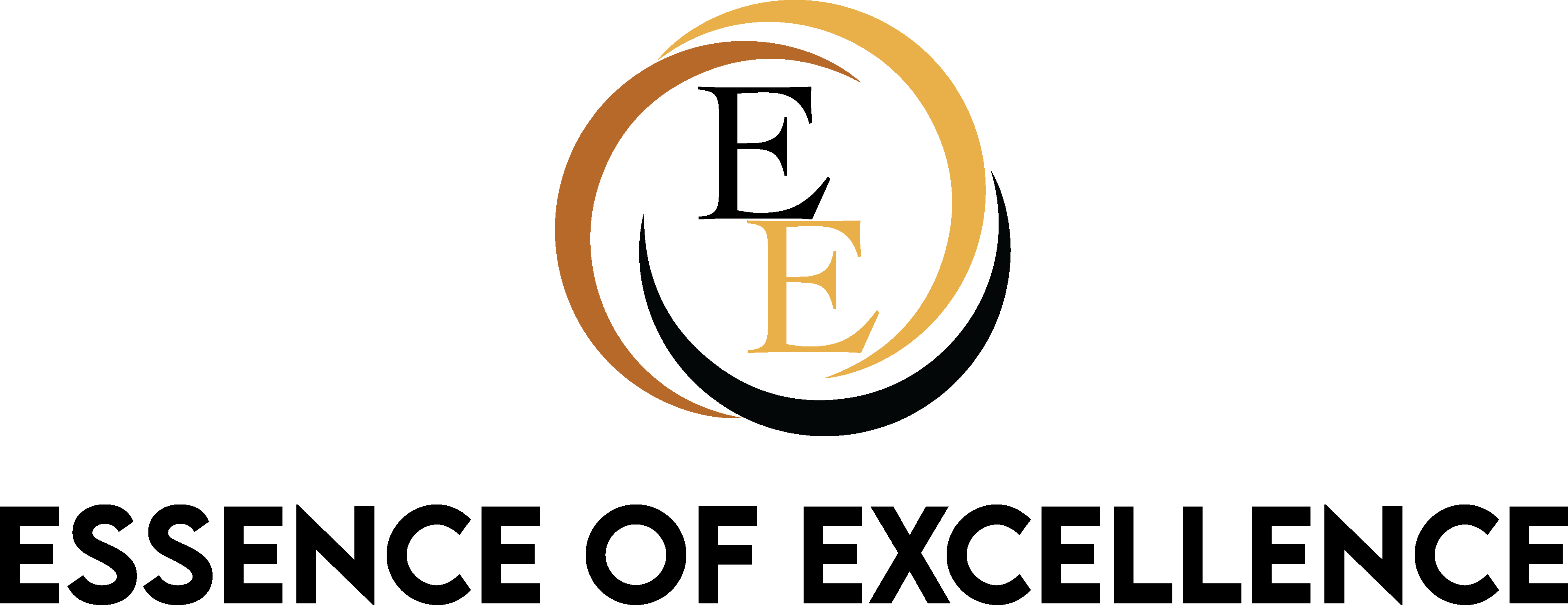
The 14th annual University of Southern Indiana Multicultural Center Essence of Excellence Summit is set for 3 p.m. Friday, September 27 in Carter Hall, located in University Center West. This year’s theme, “Challenging You About You,” aims to provide all college students, especially those of historically underrepresented backgrounds, the knowledge, tools and skills to achieve better versions of themselves.
The 2024 speaker is Dr. D’Angelo Taylor. He is the inaugural Vice President for Hope, Unity, and Belonging (HUB) at Belmont University. In this role, Taylor spearheads the university’s diversity, equity, inclusion and belonging initiatives, supporting Belmont’s commitment to hope and inclusive excellence. The HUB, under his leadership, manages Title IX compliance and non-discrimination efforts, fostering a sense of genuine connection within the community.
Taylor previously served as Vice President for Student Affairs at Central State University and Associate Director of the Multicultural Center at USI. He is active in the community, serving on the board of Brothers Out Saving Souls, Inc. (BOSS) and mentoring first-generation and low-income students. Taylor holds bachelor’s and master’s degrees in political science from Western Illinois University and a doctorate in educational leadership from the University of New England.
The Essence of Excellence Summit is an inclusive program designed to address topics relevant to students at the University, especially those of an underrepresented population. All students are welcome. Workshops discuss, teach and provide students with knowledge and application pertaining to a specific skill or topic that will aid in their success during their collegiate journey and beyond.
“Students attending this event will have the chance to connect with their peers and professionals, focusing on their goals, personal growth and self-improvement,” says Jada Hogg, Associate Director of the Multicultural Center. “The Multicultural Center hopes that students will take strides toward becoming the best version of themselves while at USI.”
For questions, please contact Hogg at jhogg@usi.edu. For more information, visit USI.edu/MCC.
Founded in 1965, the University of Southern Indiana enrolls nearly 9,300 dual credit, undergraduate, graduate and doctoral students in more than 130 areas of study. A public higher education institution, located on a beautiful 1,400-acre campus in Evansville, Indiana, USI offers programs through the College of Liberal Arts, Romain College of Business, College of Nursing and Health Professions, Pott College of Science, Engineering, and Education and School of Graduate Studies. USI is a Carnegie Foundation Community Engaged University and offers continuing educat-
EPD DAILY ACTIVITY REPORT
FOOTNOTE: EPD DAILY ACTIVITY REPORT information was provided by the EPD and posted by the City-County-County Observer without opinion, bias, or editing.



